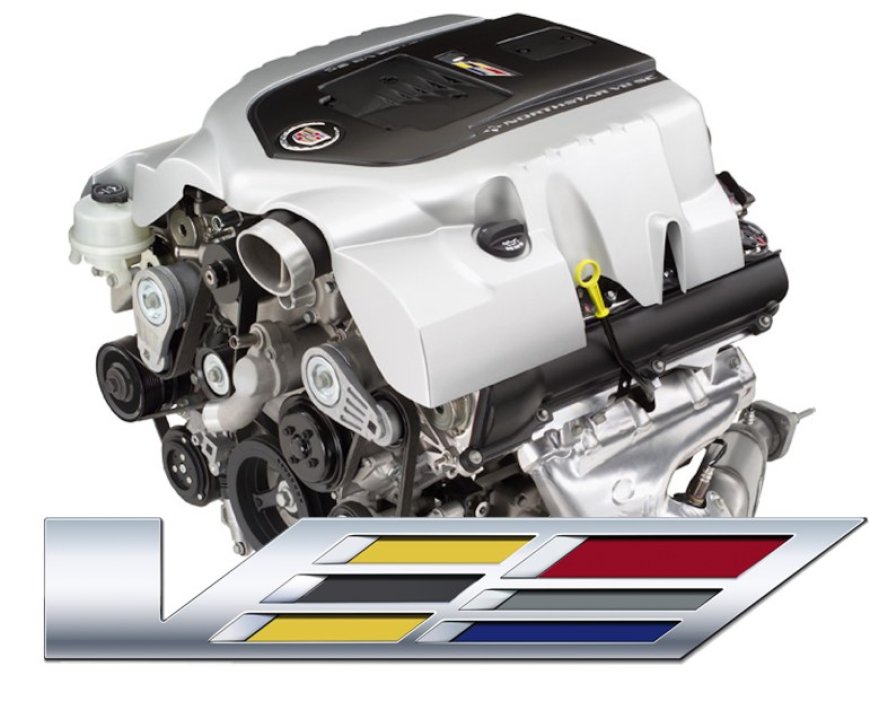A look inside the supercharged Cadillac 4.4-liter Northstar V-8, unique to the 2006-’09 STS-V and XLR-V
The original CTS-V sedan wowed buyers with V-8 power on loan from the Corvette, a Tremec six-speed manual, sharp handling and edgy styling. Its 2004 introduction put the world’s best sports sedans on notice and won over a new generation of enthusiasts for Cadillac. The two V-series cars that followed — 2006 XLR-V roadster and… The post A look inside the supercharged Cadillac 4.4-liter Northstar V-8, unique to the 2006-’09 STS-V and XLR-V appeared first on The Online Automotive Marketplace.

The original CTS-V sedan wowed buyers with V-8 power on loan from the Corvette, a Tremec six-speed manual, sharp handling and edgy styling. Its 2004 introduction put the world’s best sports sedans on notice and won over a new generation of enthusiasts for Cadillac.
The two V-series cars that followed — 2006 XLR-V roadster and the STS-V sedan — flew under the radar, yet beneath their edgy hoods lurked special V-8s designed for effortless power and torque.

Unlike the LS power on tap in the CTS-V, the XLR-V and STS-V used a custom-tailored version of Cadillac’s own Northstar V-8. This supercharged, 4.4-liter Northstar was exclusive to these two rear-drive V machines and assembled by hand at the GM Performance Build Center, formerly in Wixom, Michigan, now in Bowling Green, Kentucky. At Wixom— birthplace of legendary performance engines like the LS7 and the LS9—each V-8 was built from start to finish by one technician then the engines were inspected and dyno tested before installation.
In the STS-V sedan, the blown Northstar was rated at 469 horsepower at 6,400 rpm and 439 lb ft of torque at 3,800 rpm, but delivered 90 percent of its peak torque between 2,200 and 6,000 rpm — well before the 6,700 rpm. In the XLR-V, the engine was rated for 443 horsepower at 6,400 rpm and 414 lb ft of torque at 3,900 rpm. Also delivering peak torque between 2,200 and 6,000 rpm. (The roadster’s power figures were slightly lower primarily due to differences in the intake and exhaust that were necessary for the engine to fit in the car’s tighter engine bay.) In both the STS-V and the XLR-V, the 4.4 Northstar was paired with the Hydra-Matic 6L80 six-speed automatic transmission.

The supercharged 4.4-liter Northstar was based on a new sandcast aluminum upper block, with a semi-closed deck, rather than the 4.6’s die-cast, open-deck design. The bores were reduced to 91 mm, from 93 mm, and thicker cast-in flanged iron cylinder liners were used — all done with an eye toward reliability and strength for the supercharged engine. The 4.4 block also had revised coolant passages for higher coolant flow and a cast-in oil gallery to channel oil to the piston cooling jets.
The changes in the 4.4’s block meant unique cylinder heads as well. For starters, the boosted engine needed a lower 9:1 compression ratio (the 4.6-liter was 10.5:1) and a combustion chamber that would work with the 91-mm bore. The new heads’ open-chamber design was shaped with reduced squish areas but used the same (36 mm intake/29-mm exhaust) valves as the 4.6-liter. The deck thickness of the heads was increased for strength and the head castings were also T7 heat treated. The water jackets, as well as the intake and exhaust ports were all reworked for maximum flow in these heads and multi-layer steel head gaskets were used to prevent failures. The dual overhead camshafts in the 4.4 were made of flame-hardened nodular iron and ground with longer intake and exhaust duration to take full advantage of the supercharger’s boost. The rear-wheel-drive-specific Northstar used variable valve timing on all four cams, and the 4.4-liter’s VVT programming was unique.
The 4.4 was outfitted with new heavy-duty pistons, still cast aluminum, but with coated skirts and upgraded rings as well as larger full-floating wrist pins. These pistons also incorporated drains for the oil cooling system implemented to reduce piston crown temperatures under boost. Swinging the pistons were upgraded rods that were heat treated and attached to the forged steel crank with impact-cracked caps.

The 4.4 was the first supercharged Northstar — and also the first ever supercharged Cadillac production engine — so a bespoke blower was also part of the design. The 4.4’s belt-driven Roots-type supercharger was manufactured by Eaton but designed by GM Powertrain. The housing incorporated an integral intake manifold, a pair of tri-lobe Roots rotors and, above those, a liquid-to-air intercooler array with four cooler tubes. Compressed air was forced upward through the intercooler tubes for cooling and then drawn downward into the intake manifold.
Fuel was fed to the injectors by two stainless steel rails with a flexible crossover connecting them. Ignition was via coil-on-plug and spent gases exited through cast nodular-iron manifolds.

A lot of engineering and careful assembly work went into the 4.4-liter Northstar, but it had a short life as both the STS-V and the XLR-V were discontinued after 2009. These are both low-production cars as well: Cadillac made 2,440 STS-Vs over four model years and 2,188 XLR-Vs. The rarest are the 2009 editions with 96 STS-Vs and 239 XLR-Vs made.






The post A look inside the supercharged Cadillac 4.4-liter Northstar V-8, unique to the 2006-’09 STS-V and XLR-V appeared first on The Online Automotive Marketplace.











































